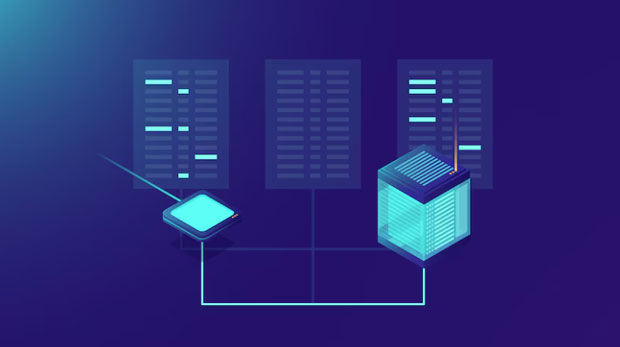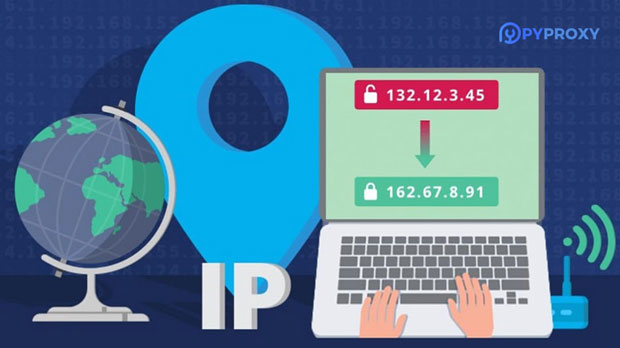In today’s digital age, the need for privacy, security, and seamless web scraping has led to a significant rise in the usage of proxies. Specifically, rotating datacenter proxies have become a popular choice for many businesses and individuals. These proxies provide a unique IP address for every request, allowing users to avoid being blocked or banned by websites. However, when it comes to global operations, an important question arises—does PYPROXY's rotating datacenter proxies support global multi-region nodes? In this article, we will dive into the capabilities of PyProxy's proxies, evaluating whether they provide multi-region support and why this feature is essential for businesses with global reach. What Are Rotating Datacenter Proxies?Rotating datacenter proxies are a type of proxy server that uses a large pool of IP addresses, rotating between them for each request. The primary benefit of these proxies is that they allow users to remain anonymous and access geo-blocked content without being detected by websites. Unlike residential proxies, which come from real users, datacenter proxies are sourced from data centers, offering faster speeds and greater reliability.One of the main advantages of rotating proxies is the ability to use different IP addresses from a broad range of locations. This rotation makes it difficult for websites to detect patterns or block users based on their IP addresses. However, this raises the question of whether PyProxy’s rotating datacenter proxies are capable of offering multi-region support, specifically in terms of having nodes spread across the globe.The Need for Global Multi-Region Nodes in Proxy ServicesFor businesses and individuals who rely on proxies for web scraping, data collection, or any other purpose that requires multiple requests to websites, multi-region proxy support is crucial. A multi-region proxy network allows users to mimic traffic from various parts of the world, bypassing geo-restrictions and ensuring better success rates in accessing region-specific content.For example, if a business is looking to gather data from European websites, it would be inefficient and likely ineffective to use proxies only located in North America or Asia. Websites might detect the misalignment between the expected geographic origin and the actual IP address, leading to blocks, CAPTCHAs, or even IP blacklisting. Having proxies spread across different global regions ensures that the business can make requests from various countries, offering greater flexibility and security.PyProxy's Rotating Datacenter Proxies: Does It Support Global Multi-Region Nodes?Now that we understand the importance of global multi-region support in proxy services, let’s take a closer look at PyProxy’s rotating datacenter proxies. In terms of global coverage, PyProxy provides a robust network that spans multiple regions, offering users the ability to access proxy nodes in various geographical locations worldwide.PyProxy’s infrastructure is designed to cater to users who require proxy access from diverse regions, supporting key markets like North America, Europe, Asia, and beyond. This network of rotating datacenter proxies allows users to select IPs from different regions for each request, ensuring that they can operate effectively across a global scale.How Does PyProxy Ensure Global Multi-Region Node Support?PyProxy achieves global multi-region node support through a strategically distributed network of datacenters. These datacenters are placed in key regions, ensuring high availability and reliability for users. Each datacenter offers a pool of IP addresses, which can be rotated based on the user's needs. This geographic distribution not only provides access to content from different regions but also helps maintain optimal speeds, low latency, and reduced chances of IP bans.By having servers in multiple regions, PyProxy ensures that requests originating from specific countries or regions appear as though they are coming from local IP addresses. This allows users to access localized content and bypass regional restrictions more effectively. Whether you need proxies from the United States, Europe, or Asia, PyProxy can provide reliable and fast proxies from a wide range of locations.Benefits of Using PyProxy's Multi-Region Rotating Proxies1. Avoid Geo-Blocking and IP Bans: With global coverage, PyProxy's rotating datacenter proxies allow users to access content that may be restricted in certain regions. By rotating IPs from various locations, users can avoid being blocked or banned by websites.2. Faster and More Reliable Web Scraping: Web scraping often involves sending a large number of requests to websites. With a distributed network of proxy servers across multiple regions, PyProxy can help users perform web scraping tasks with higher efficiency, speed, and success rates.3. Improved Success Rates for Data Collection: Different regions may have different data structures, which can affect the scraping process. Having proxies in multiple locations allows users to access region-specific data more easily, resulting in higher accuracy in data collection.4. Reduced Latency: Accessing proxies located in the same region as the target website ensures lower latency and faster speeds. By selecting proxies from nearby regions, users can minimize the delay caused by long-distance connections.5. Enhanced Anonymity and Security: Using proxies from multiple regions further enhances the anonymity of users, making it more difficult for websites to track or block them. With rotating IPs from various locations, users can browse and perform online activities securely.Conclusion: The Value of Multi-Region Nodes for BusinessesIn conclusion, PyProxy's rotating datacenter proxies do indeed support global multi-region nodes, offering users access to proxy servers in various regions worldwide. This feature is crucial for businesses, web scraping professionals, and individuals who need to access region-specific content or ensure the anonymity of their online activities. With the ability to rotate IPs from different regions, PyProxy helps users bypass geo-restrictions, avoid IP bans, and maintain higher success rates in their online tasks.By utilizing PyProxy’s multi-region support, users can significantly improve their web scraping efficiency, enhance their security, and optimize their global operations. Whether it’s for accessing region-locked content, conducting research, or gathering data, PyProxy’s rotating datacenter proxies provide a reliable and flexible solution for users who need global coverage.
Aug 25, 2025


































































